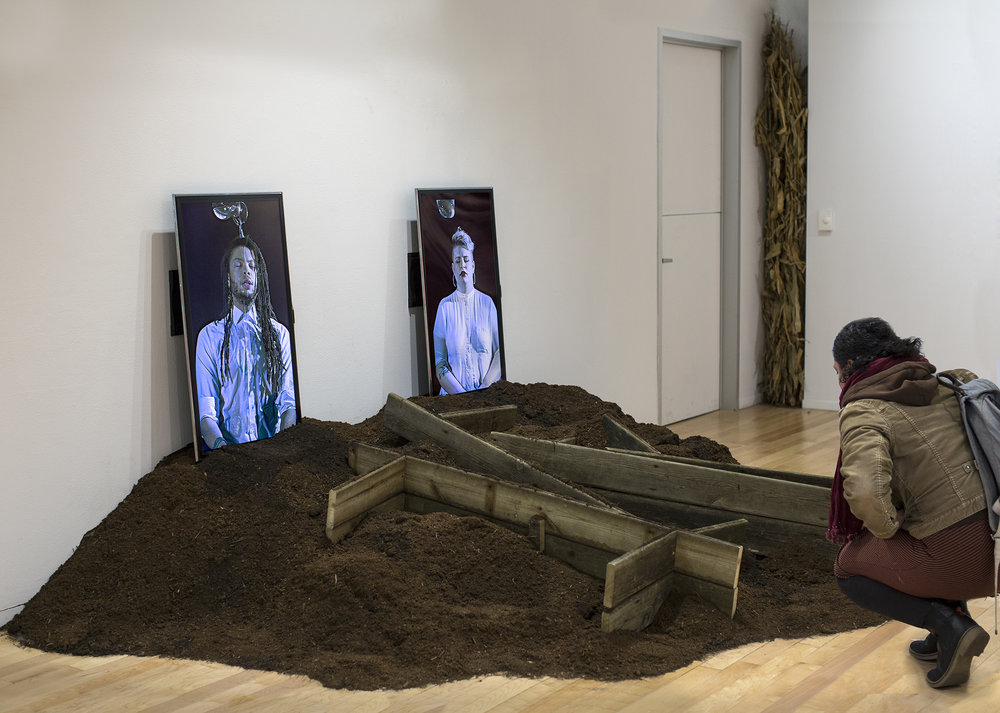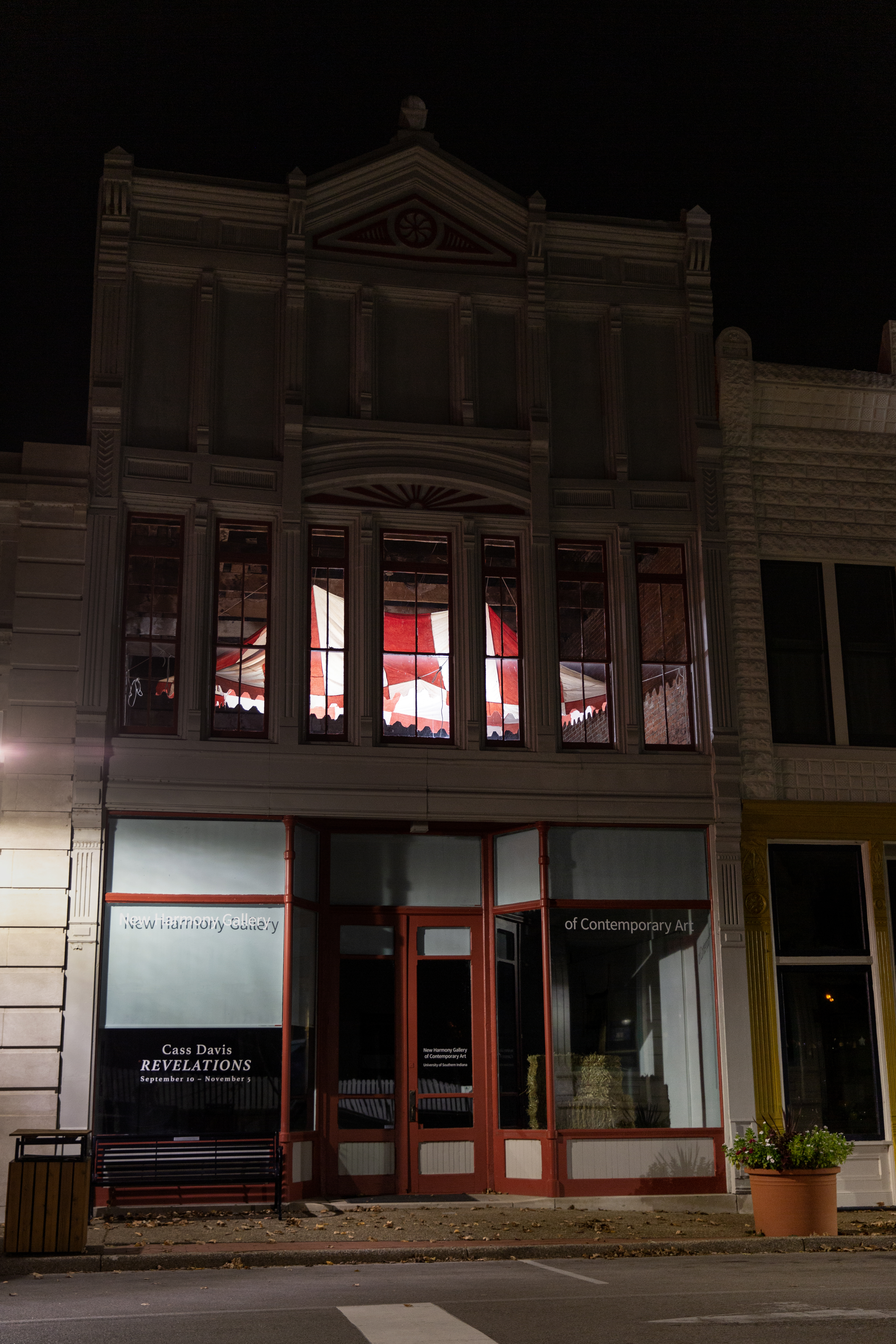REVELATIONS 2022
University of Southern Indiana, New Harmony Gallery of Contemporary Art New Harmony, IN
Curated by Iris Williamson
In this solo exhibition featuring new and existing work, Cass Davis exhumes collective and personal histories and questions perceptions of history—an excavation of Small Town America. Titling the show after the final apocalyptic Biblical book, Davis explores a multiplicity of transformational experiences, or Revelations. Conversing with the roots of Evangelicalism, whiteness, their own Midwestern upbringing in the church, and New Harmony’s “utopian” attempts, Davis’s work seeks to ask the question, What is to be revived and what is to be dismantled? Revelations implies the removal of the veil—a revelation of truth.
The installation, sculptural, and textile works in Revelations utilize the textures and imagery of rural landscapes. Hand-woven Jacquard textiles featuring archival images of 1920s Appalachian revivals; the 1908 Springfield, IL Race Riot; and the artist’s own family photos allow for a revisitation of complex histories. Hay bales sourced from local farms, natural materials, and roadside architecture evoke a sense of familiarity and curiosity, and conjure the memory embedded in the land.
Revelations embodies the duality of tragedy and ecstasy found in the human search for transcendence. Sifting through archival materials, Davis seeks to uncover what has been hidden. “How can we alter our perceptions of history? What if we recognize that the oppressed past is non-linear; that history remains alive in the present?” Davis states, “Perhaps we can recognize that the ghosts that haunt our lives are speaking to us from the past—that through acknowledging their presence, we may find a place to address our history with honesty and find a path to healing.”

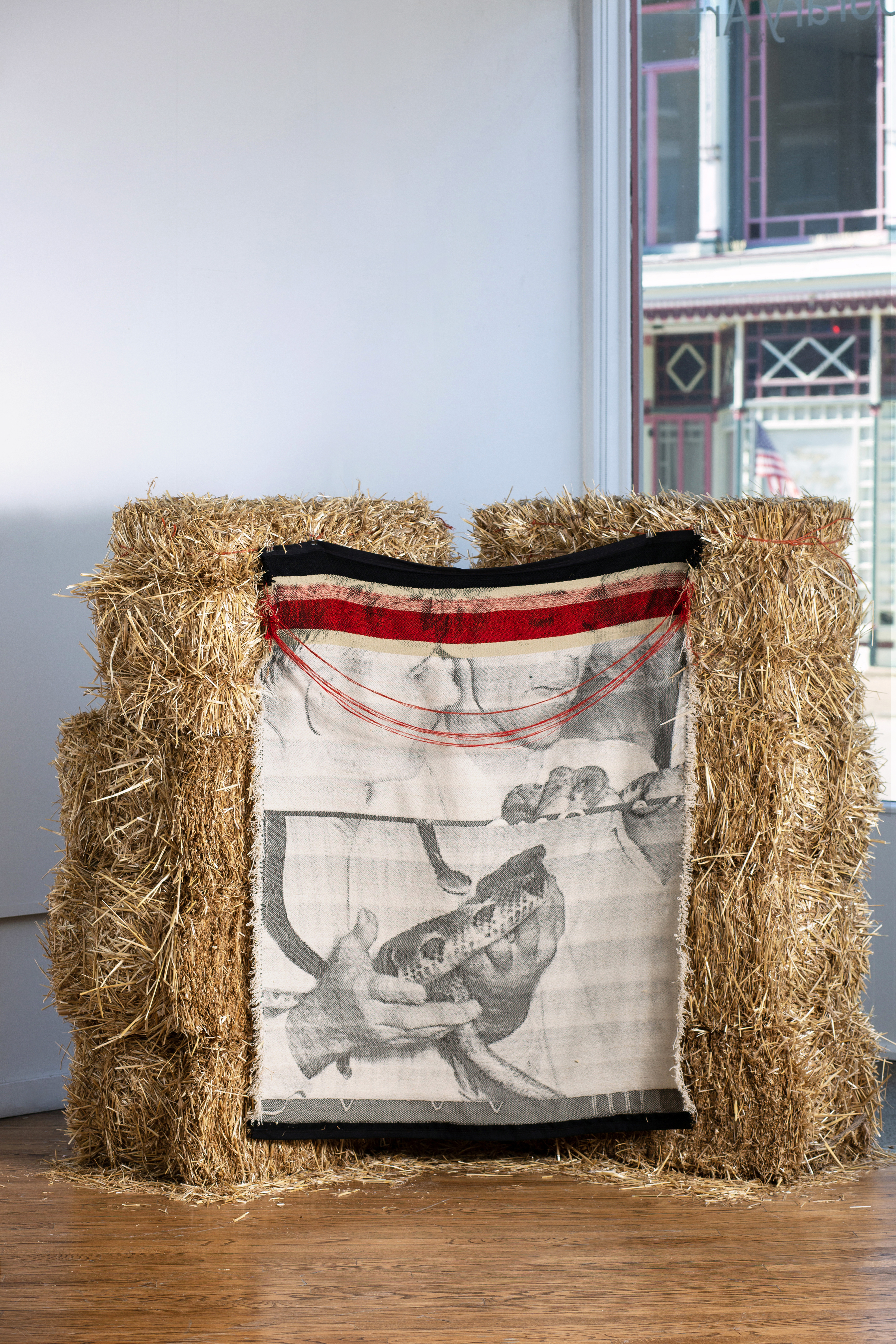




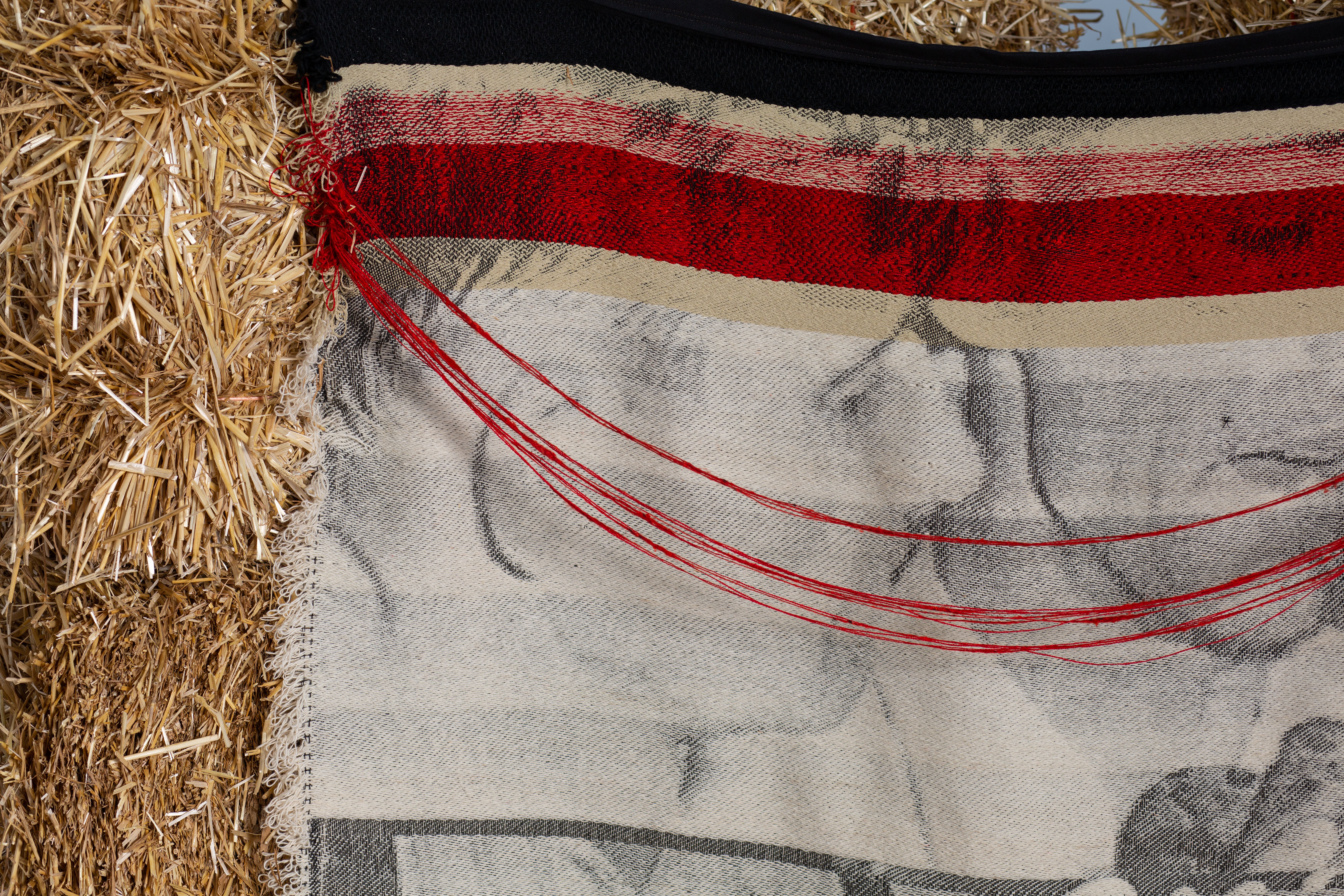
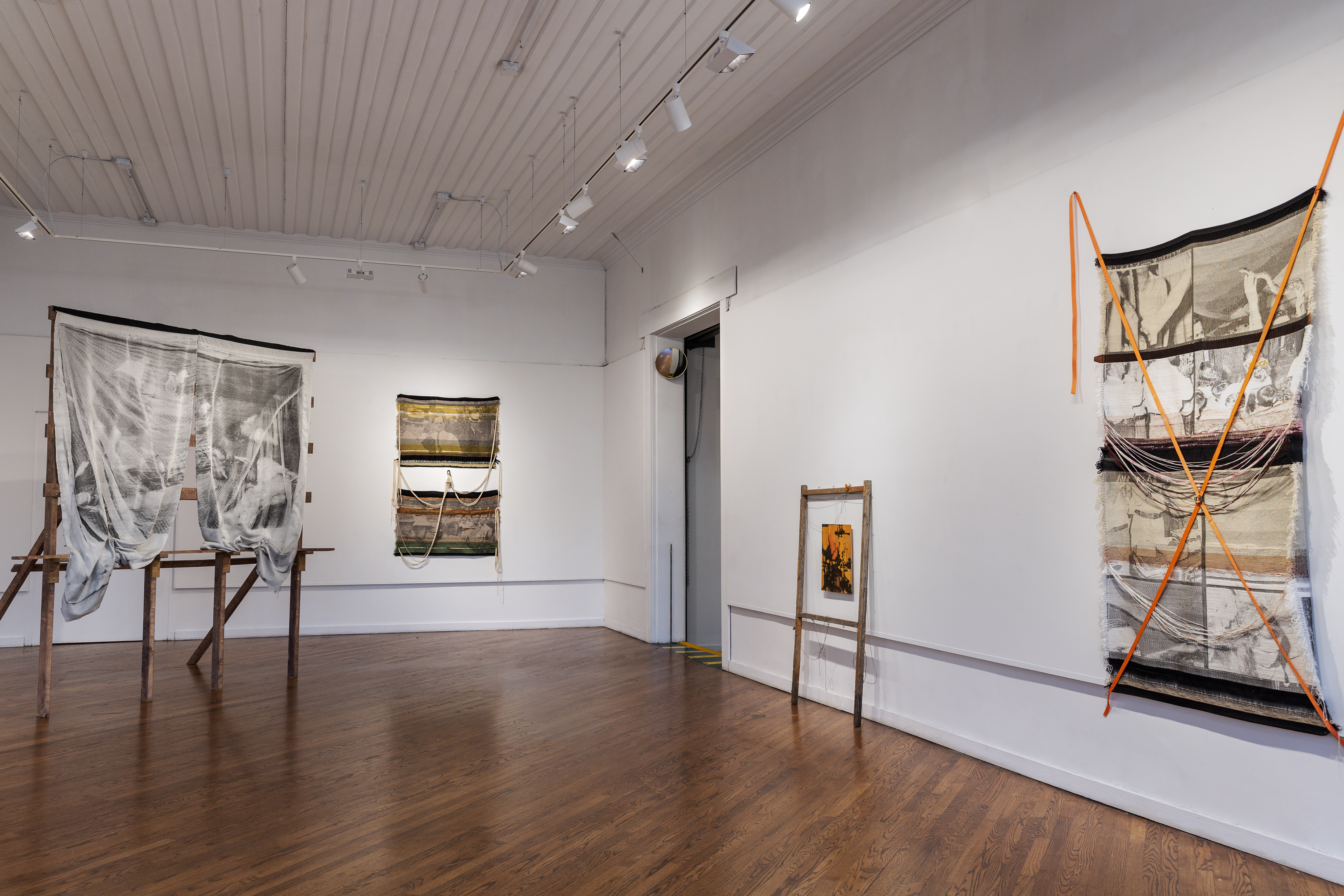
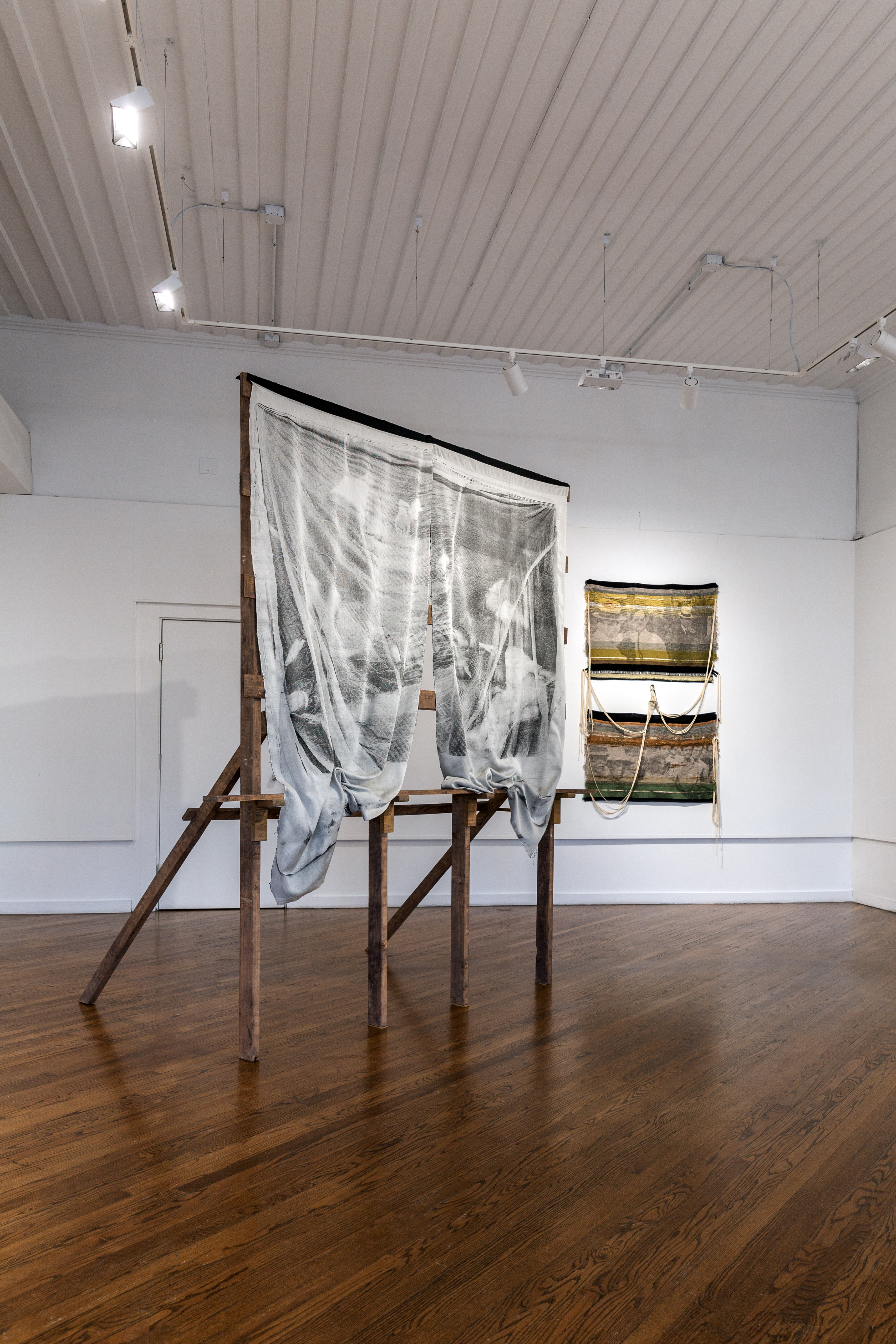








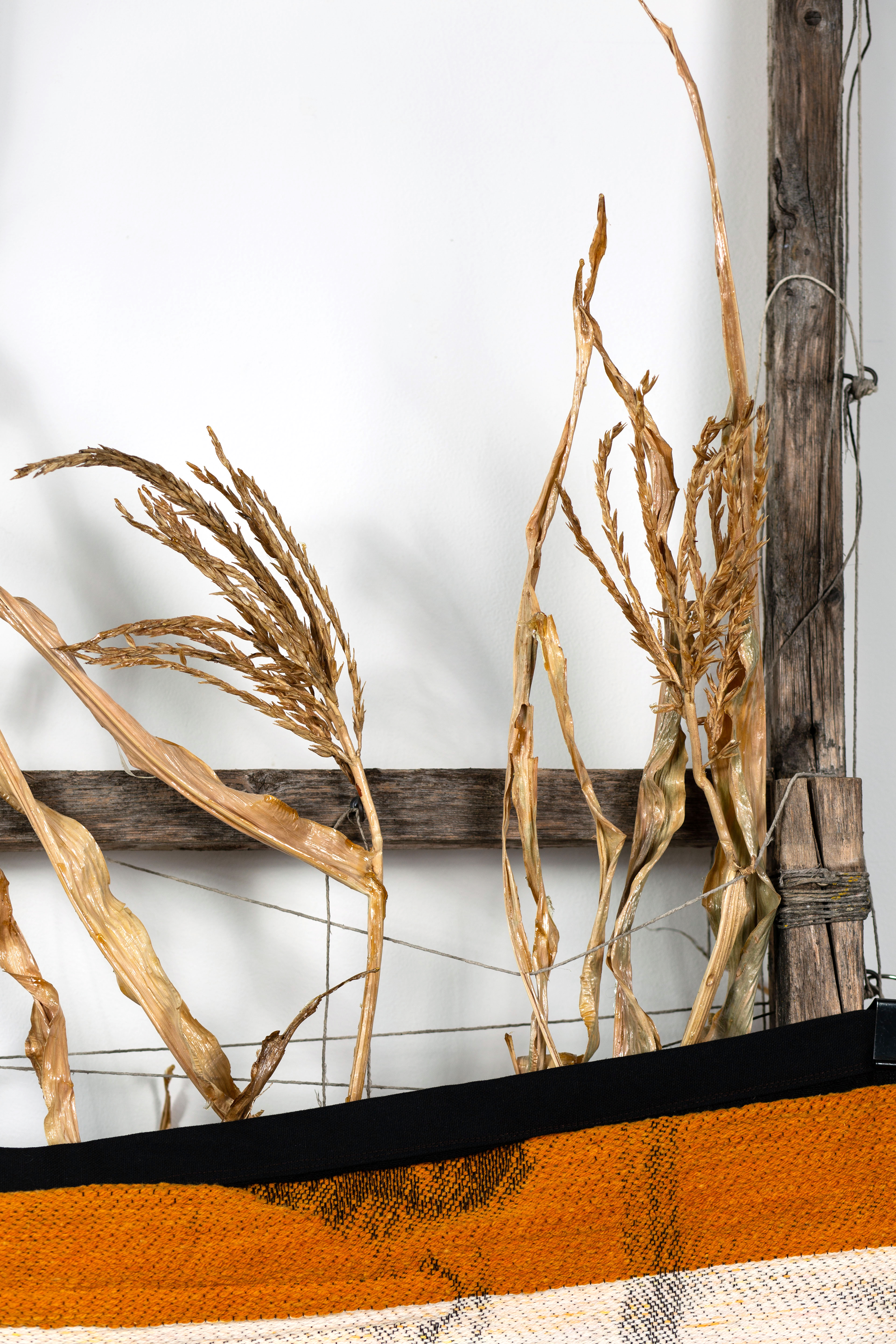
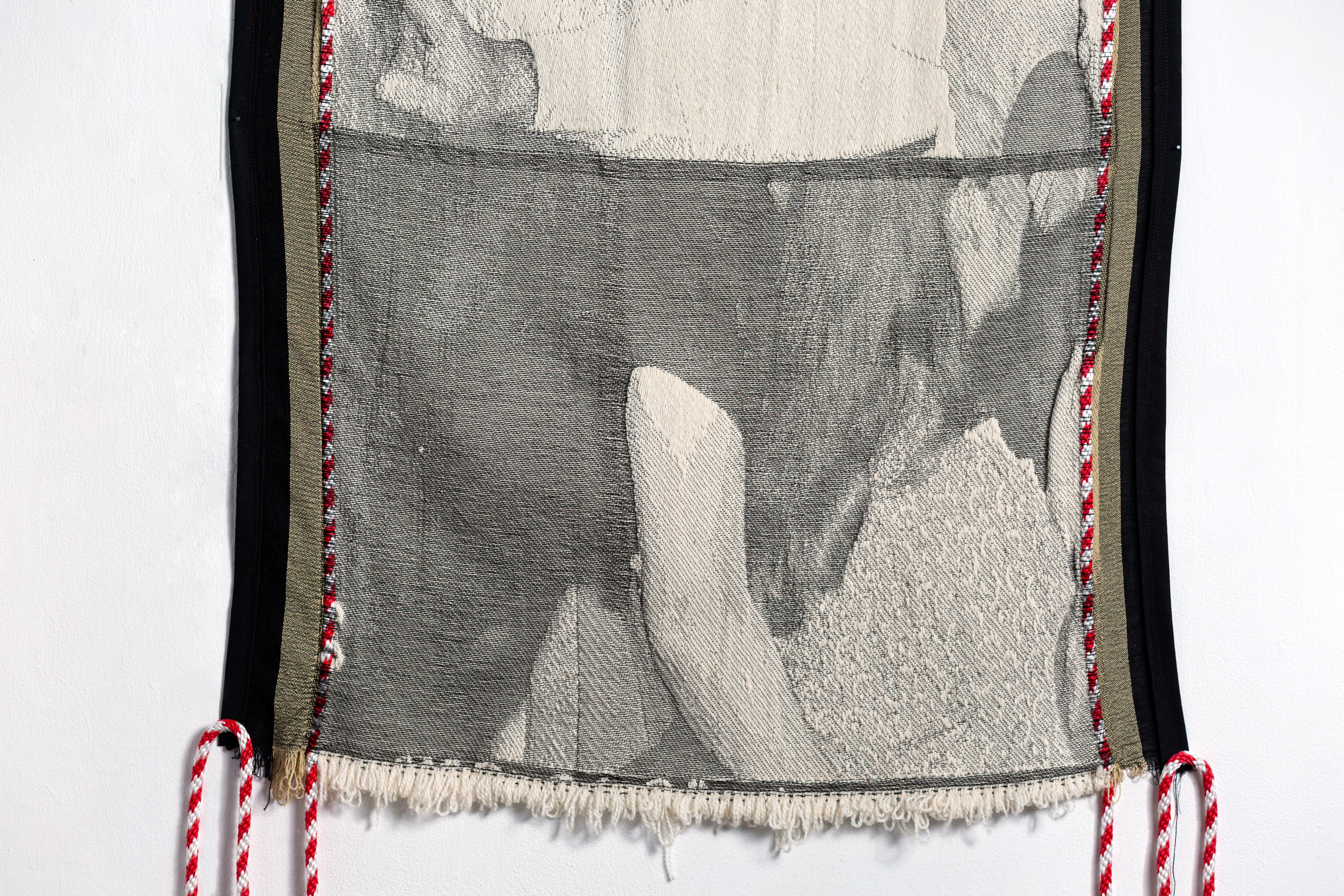

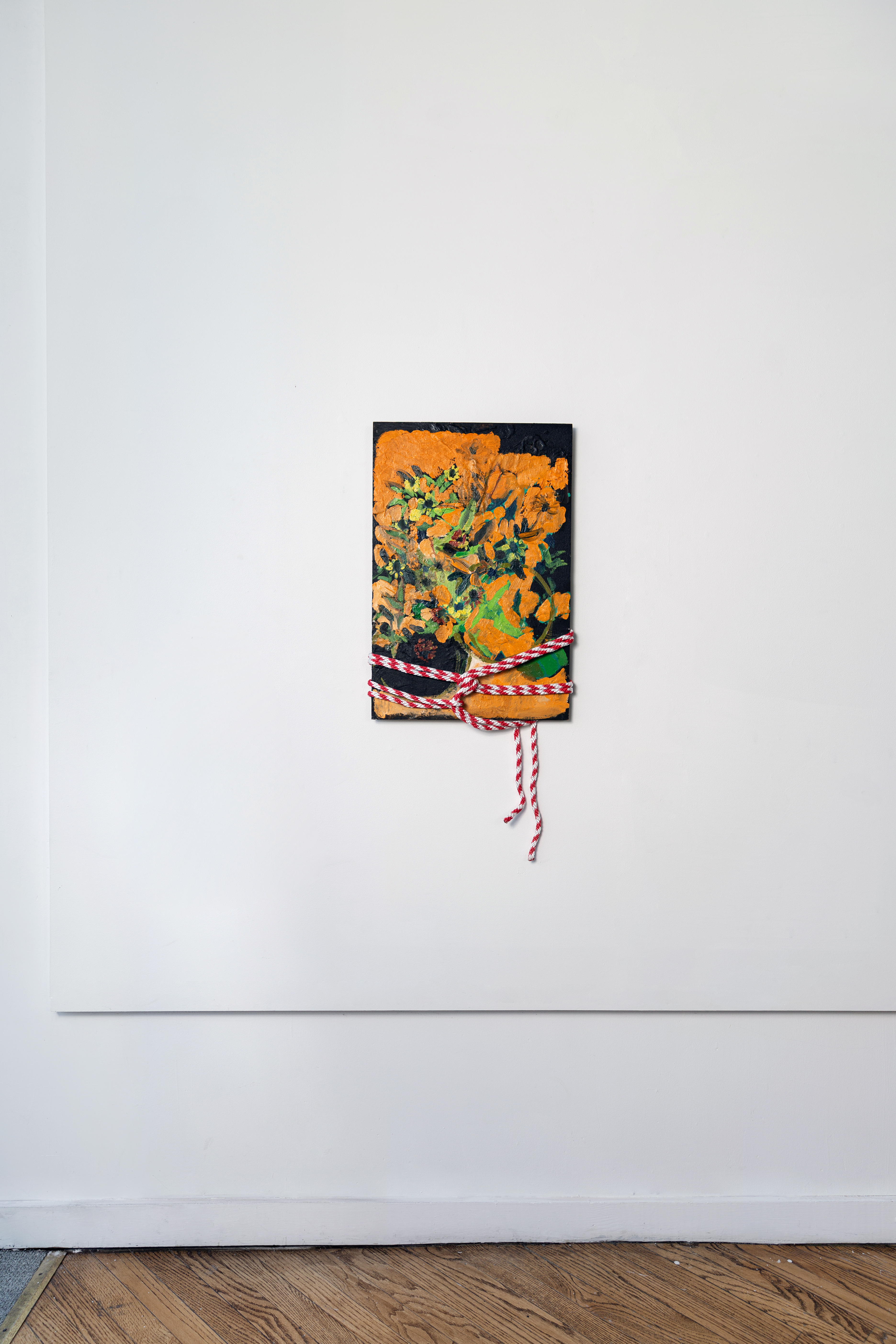



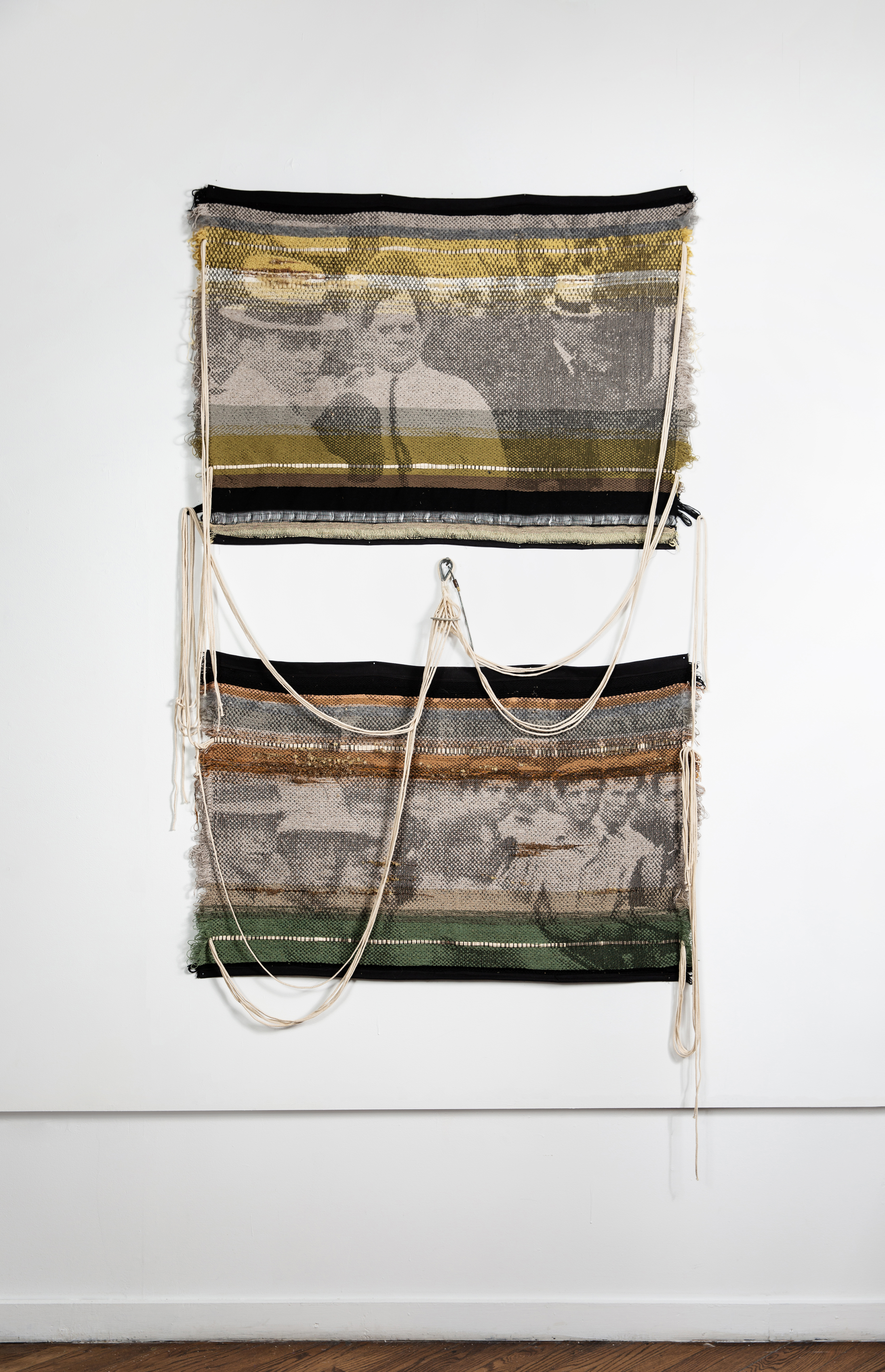
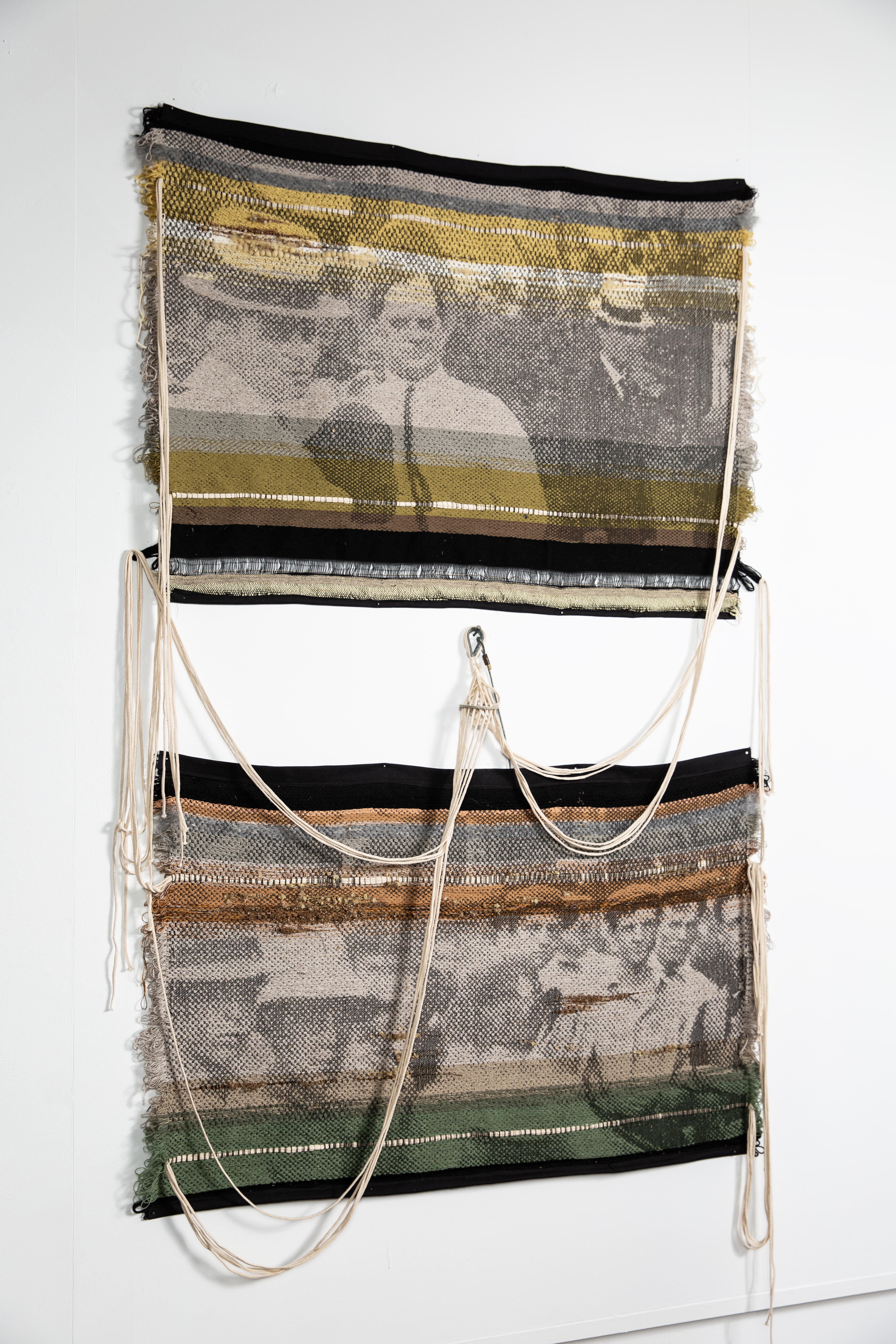
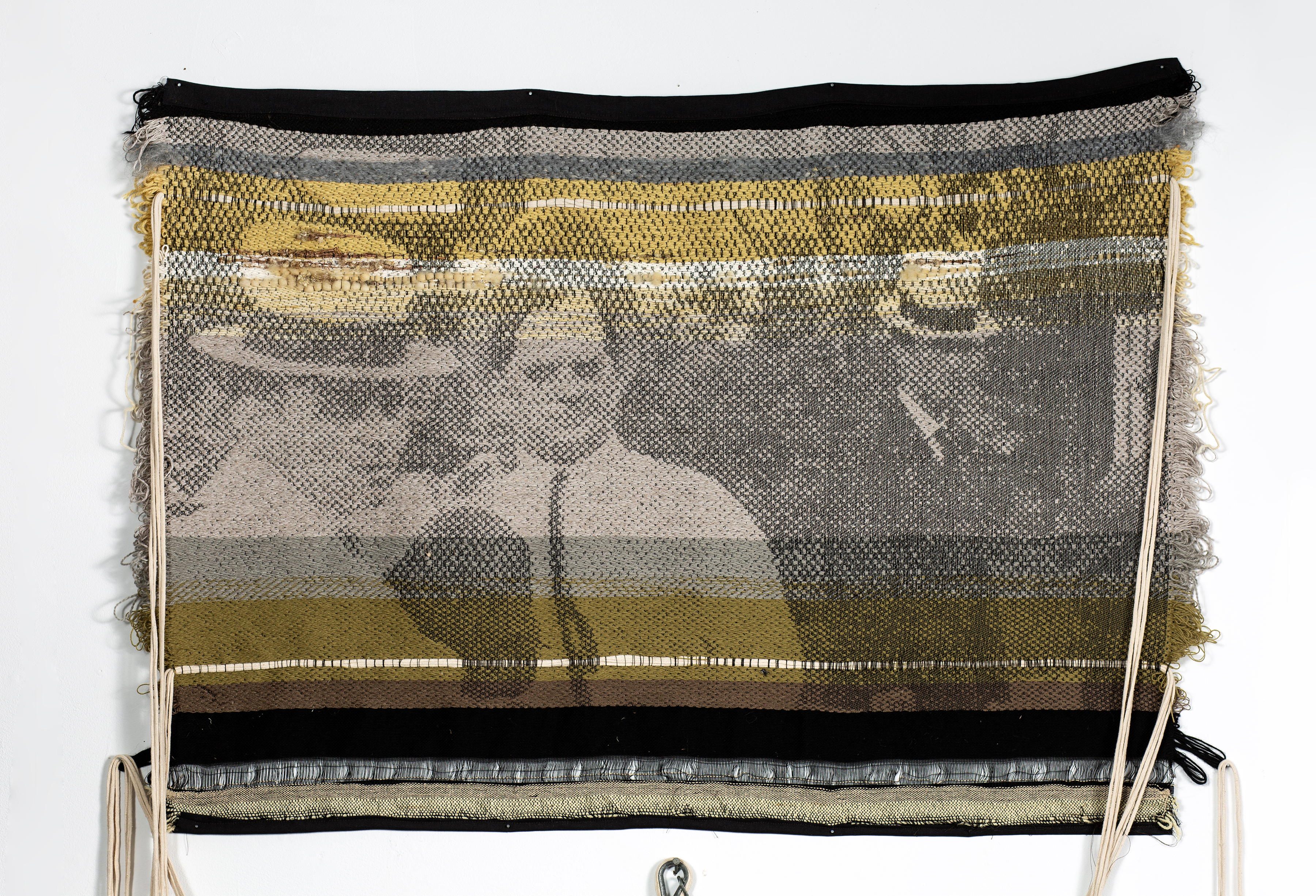
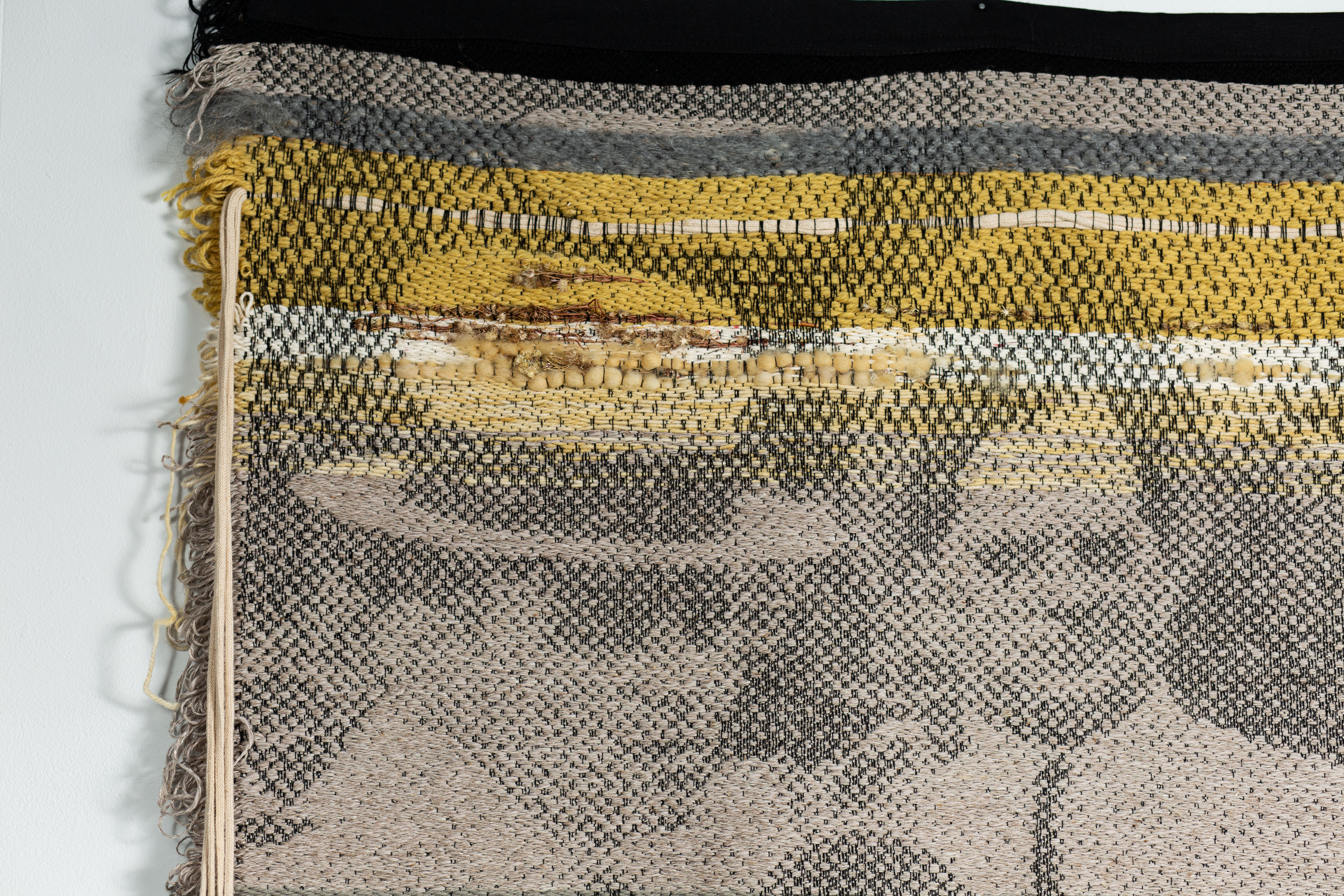




Out of Time 2020
Engage Projects
Curated by Pia Singh
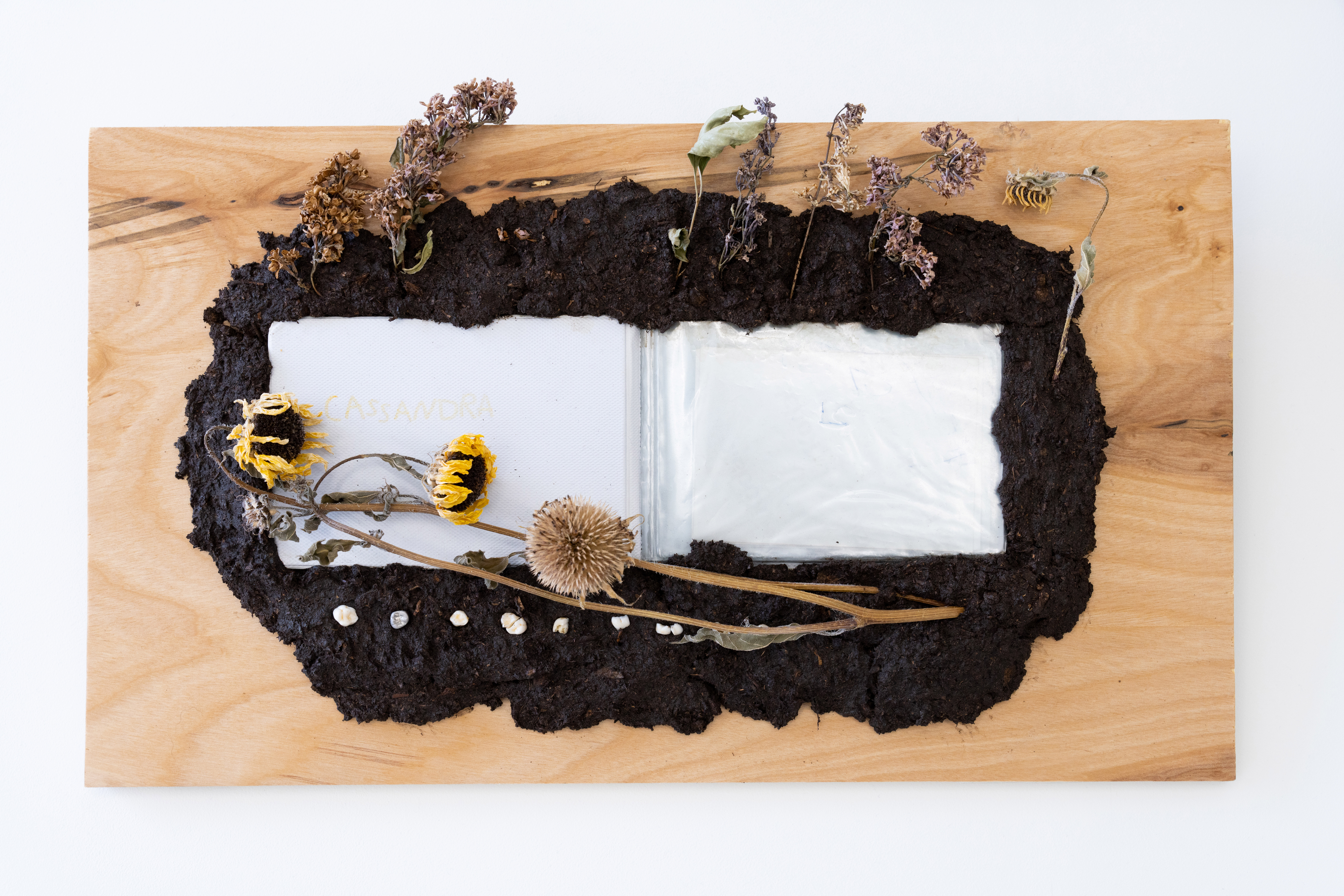
Deadname, 2020
Cast soil, wood panel, photo album, teeth,
resined lilacs, and sunflowers.
Cast soil, wood panel, photo album, teeth,
resined lilacs, and sunflowers.
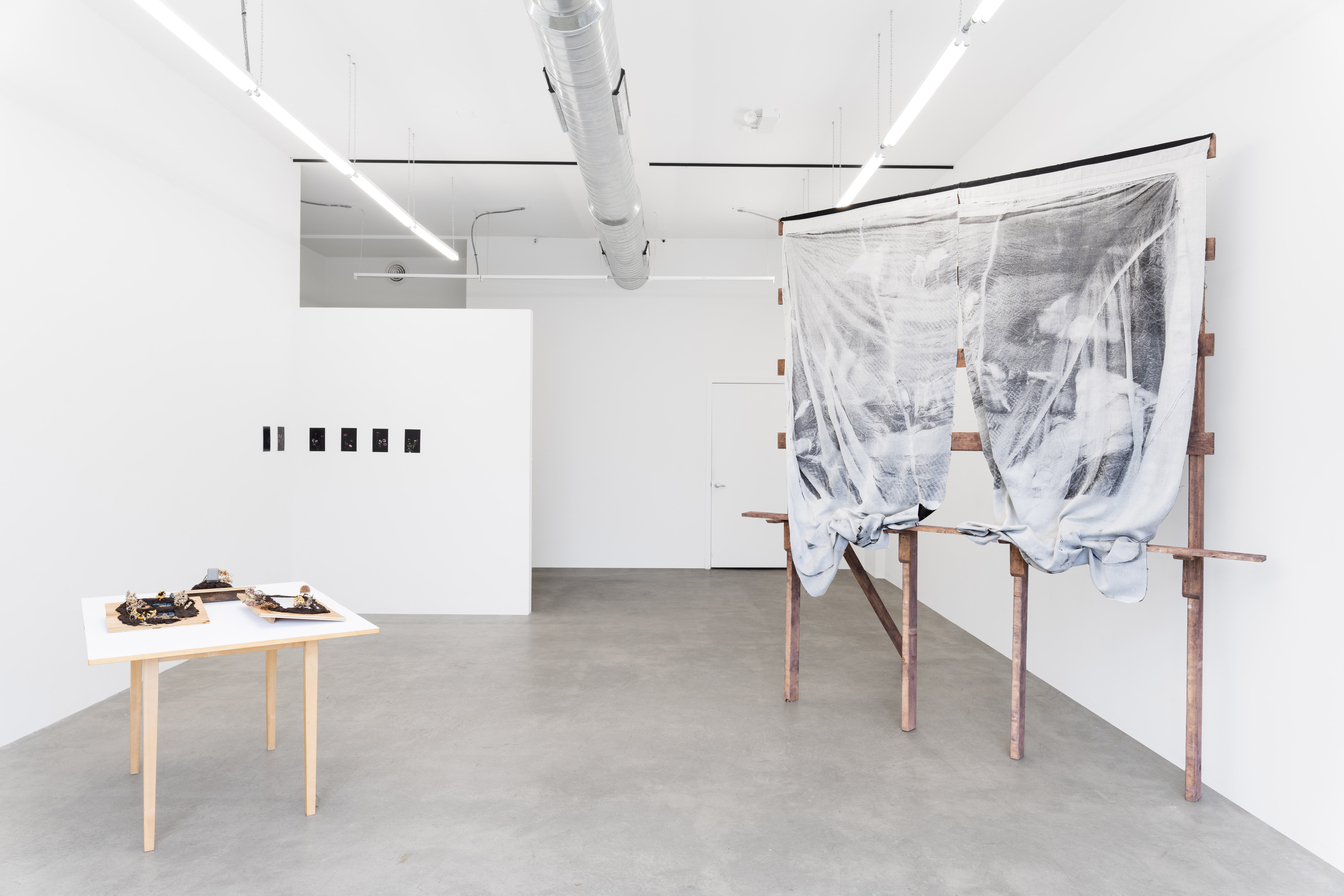
Rapture, Apparition, 2020
Jacquard cloth and aged wooden billboard frame.
Jacquard cloth and aged wooden billboard frame.
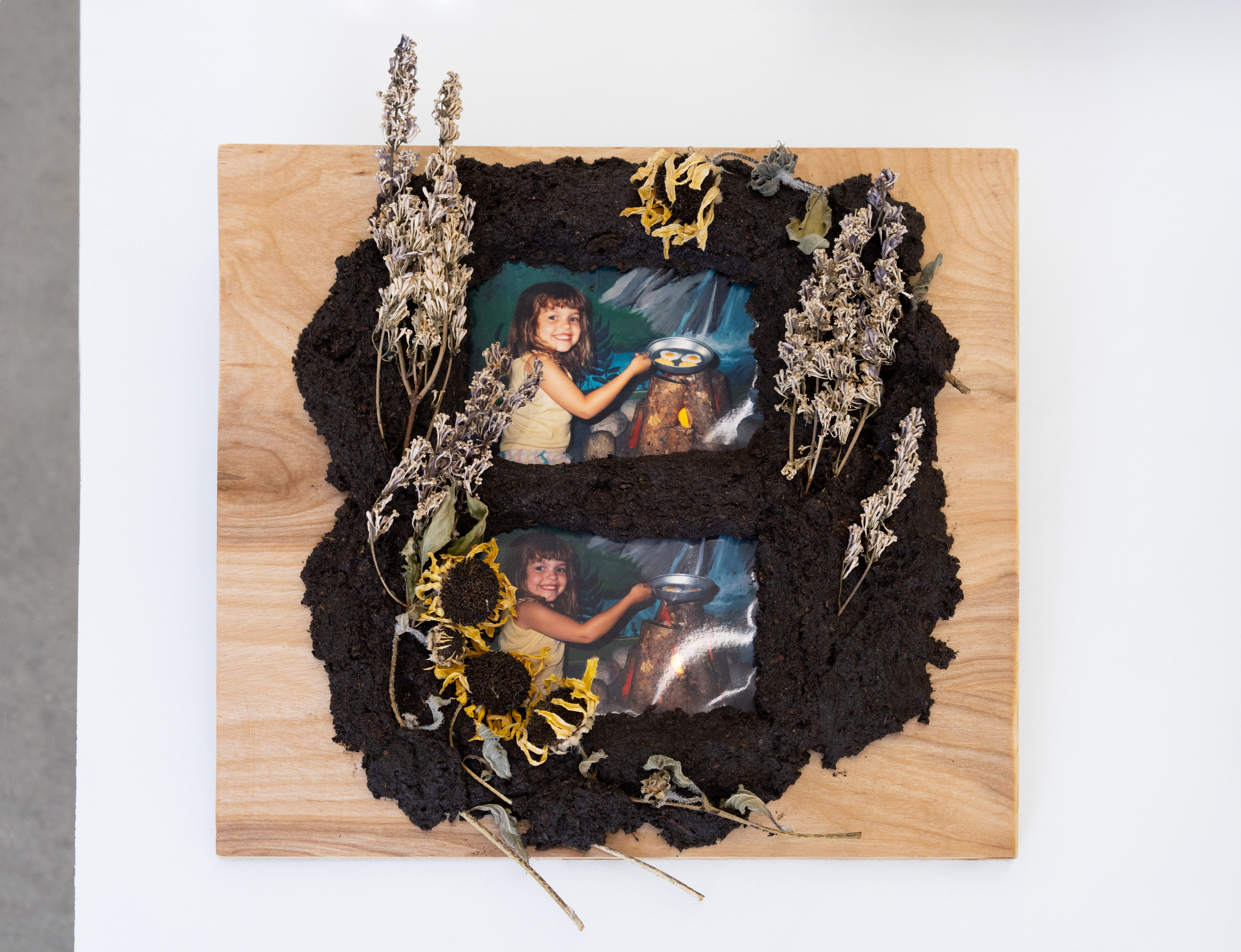
Lilacs, 2020
Cast soil, wood panel, photographs, resined
lilacs, and sunflowers.
Cast soil, wood panel, photographs, resined
lilacs, and sunflowers.
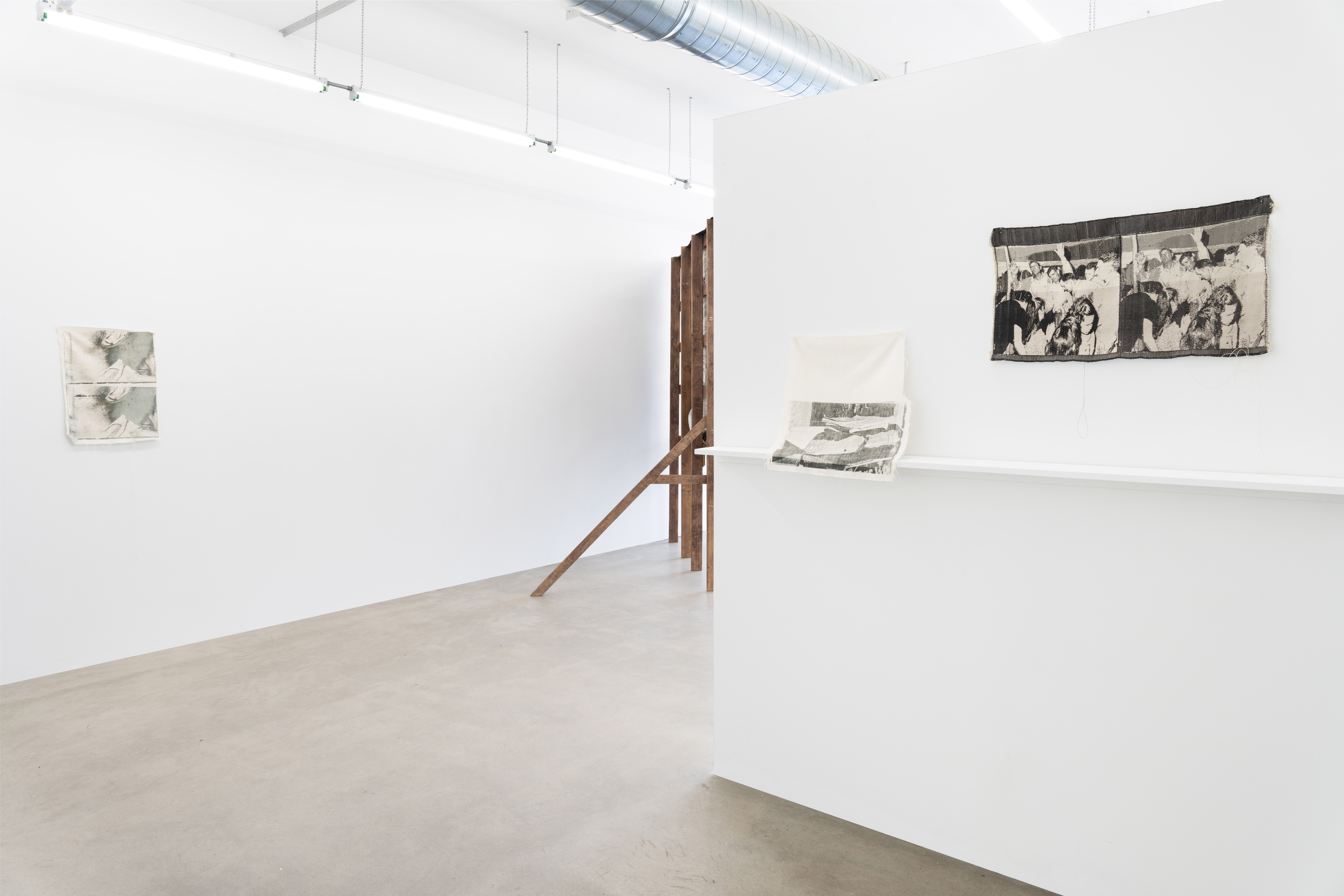
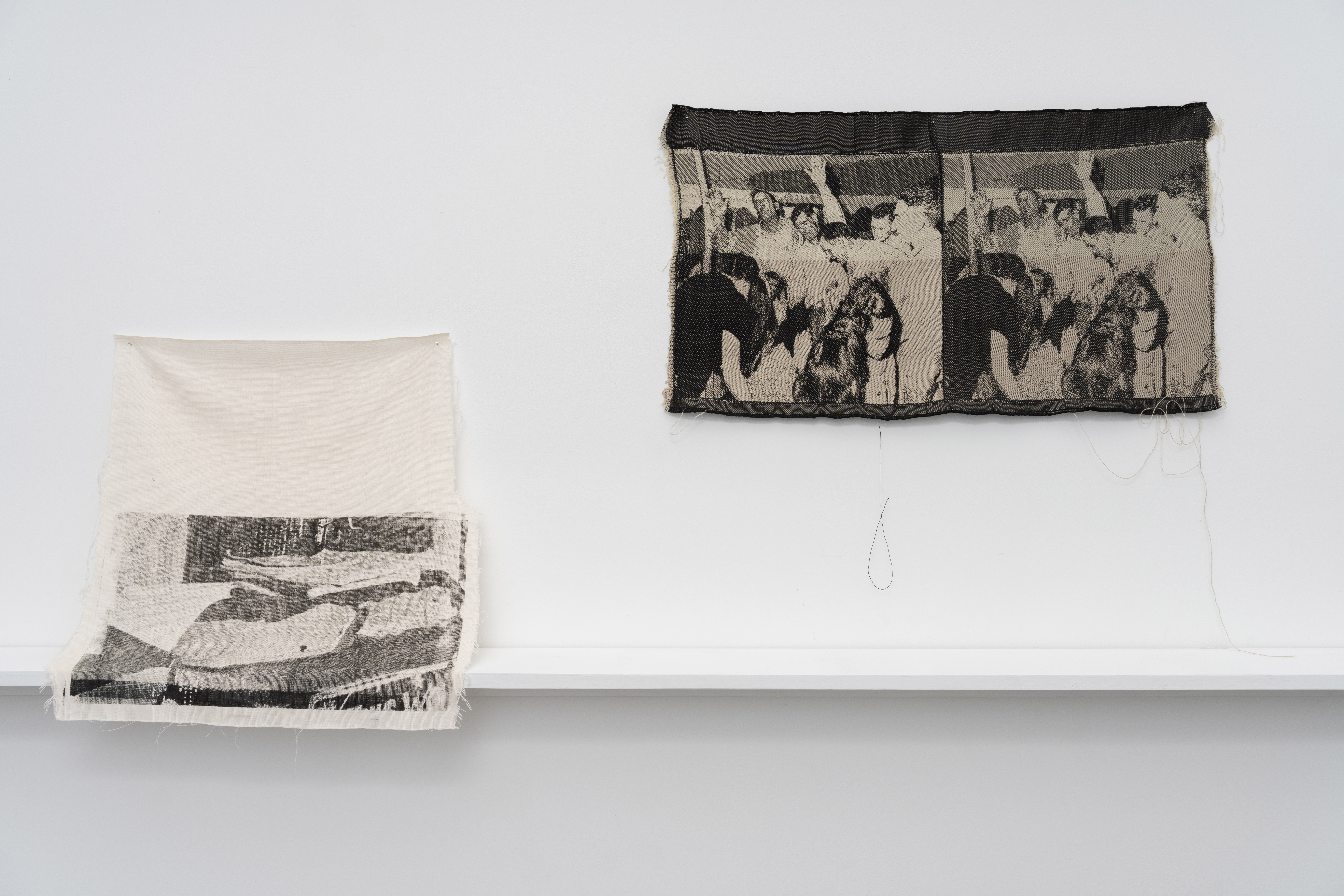
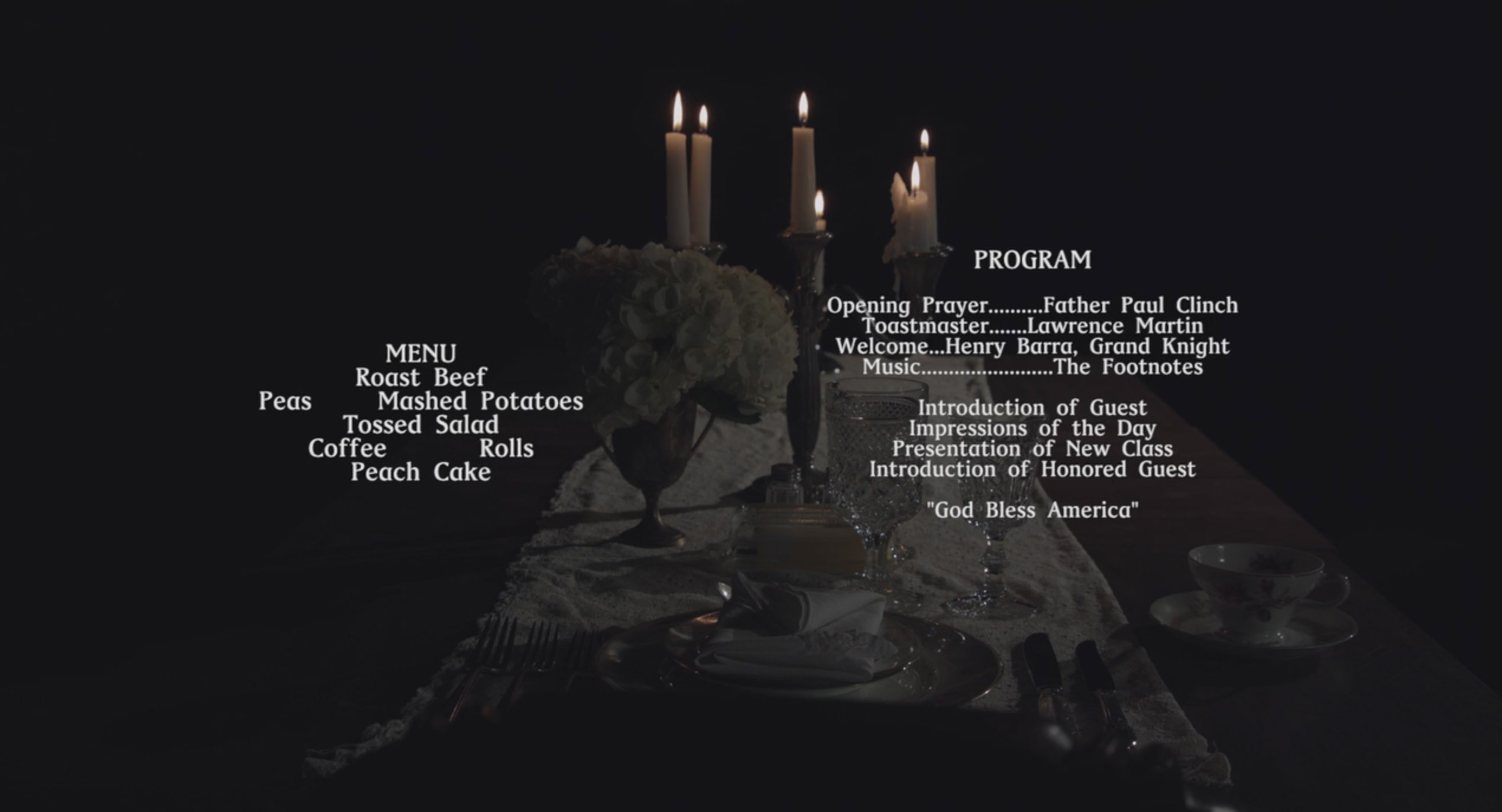
Still from Sundown Town, Reprise, 2020
Single channel video
10:20 min TRT
Single channel video
10:20 min TRT

Momento Mori, 2020
Oil painting on wood, resined studio-grown
Zinnias, garden trellis, and clamp light.



A House with many gardens, 2020
6 archival inkjet prints.


Presence, 2019
Hand screen printed dye on textile
Hand screen printed dye on textile

Still from Sundown Town, Reprise, 2020
Single channel video
10:20 min TRT
Single channel video
10:20 min TRT
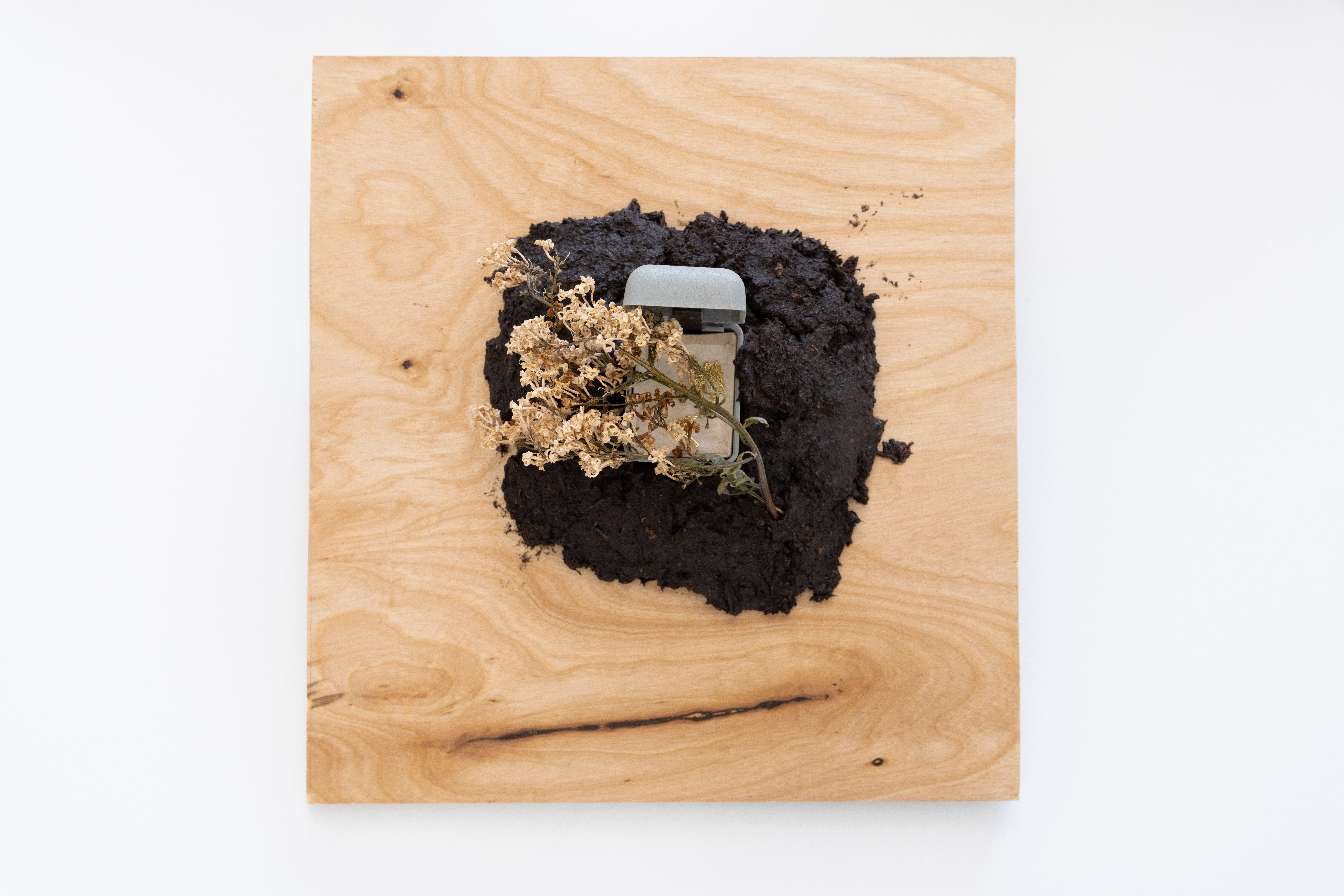
Hidden Cross, 2020
Cast soil, wood panel, gold cross necklace,
and resined lilacs.
Cast soil, wood panel, gold cross necklace,
and resined lilacs.

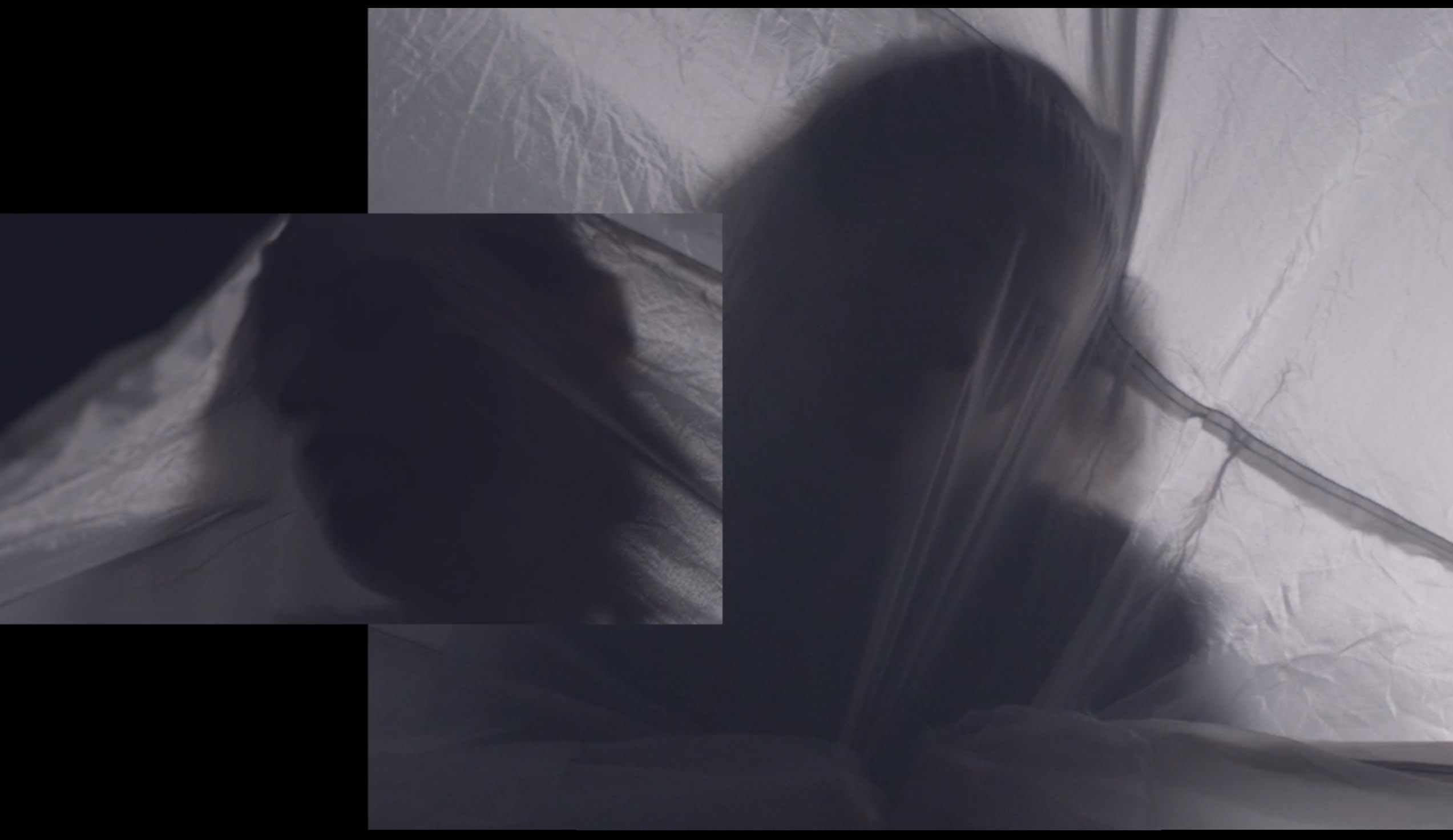
Still from Sundown Town, Reprise, 2020
Single channel video
10:20 min TRT
Single channel video
10:20 min TRT


Revival II, 2016
Hand-woven Jacquard cloth.
Hand-woven Jacquard cloth.

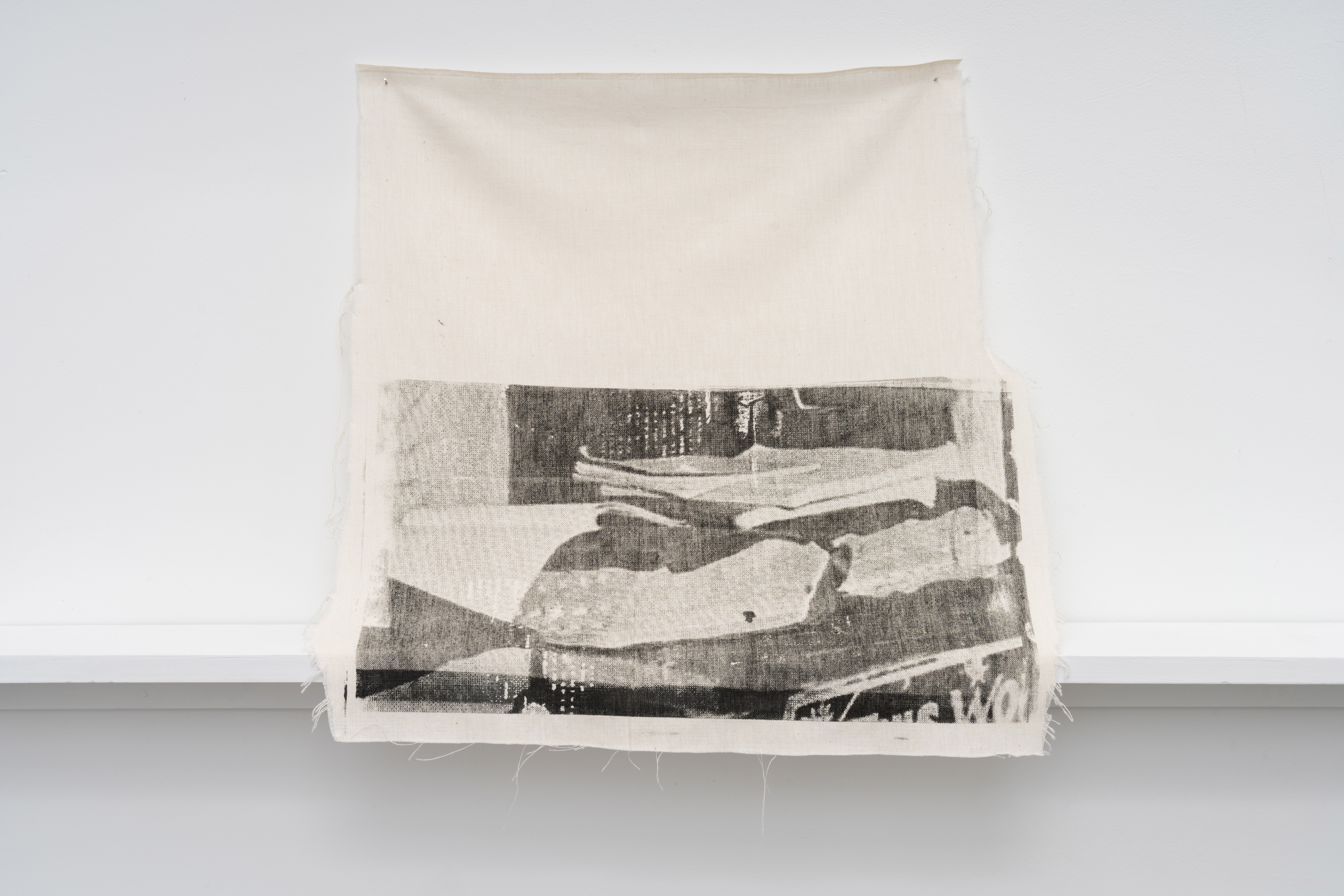
Bible, 2018
Hand screen printed dye on textile.
Hand screen printed dye on textile.

All Together, Amongst Many 2021
BEMIS Center for Contemporary Art, Omaha, NE
Curated by Rachel Adams




HEARTLAND
Oct 2019- Jan 2020
![]() Solo Exhibition, G-CADD, St. Louis
Solo Exhibition, G-CADD, St. Louis
A view of the factory, an American flag at half-staff. The landscape, an infinite expanse of field. The revival. The harvest. A death, a resurrection— a haunting, no doubt. In Heartland, we are asked to consider the landscape as embodying both felt and unknown trauma. We are prompted to take a closer look at an identity so close and familiar that we don’t stop to listen to the ghosts trapped inside.
Heartland examines the artist’s own Midwestern Evangelical upbringing. Their sculptures investigate relationships between redemption, resurrection, embodied trauma, and the failure of the American dream. Locating these sculptures within the very landscape to which they point presents a new kind of context for the work. What relationships develop when the landscape is reflected back at itself? What stories does it tell? Does the material allow for embodied trauma to speak?
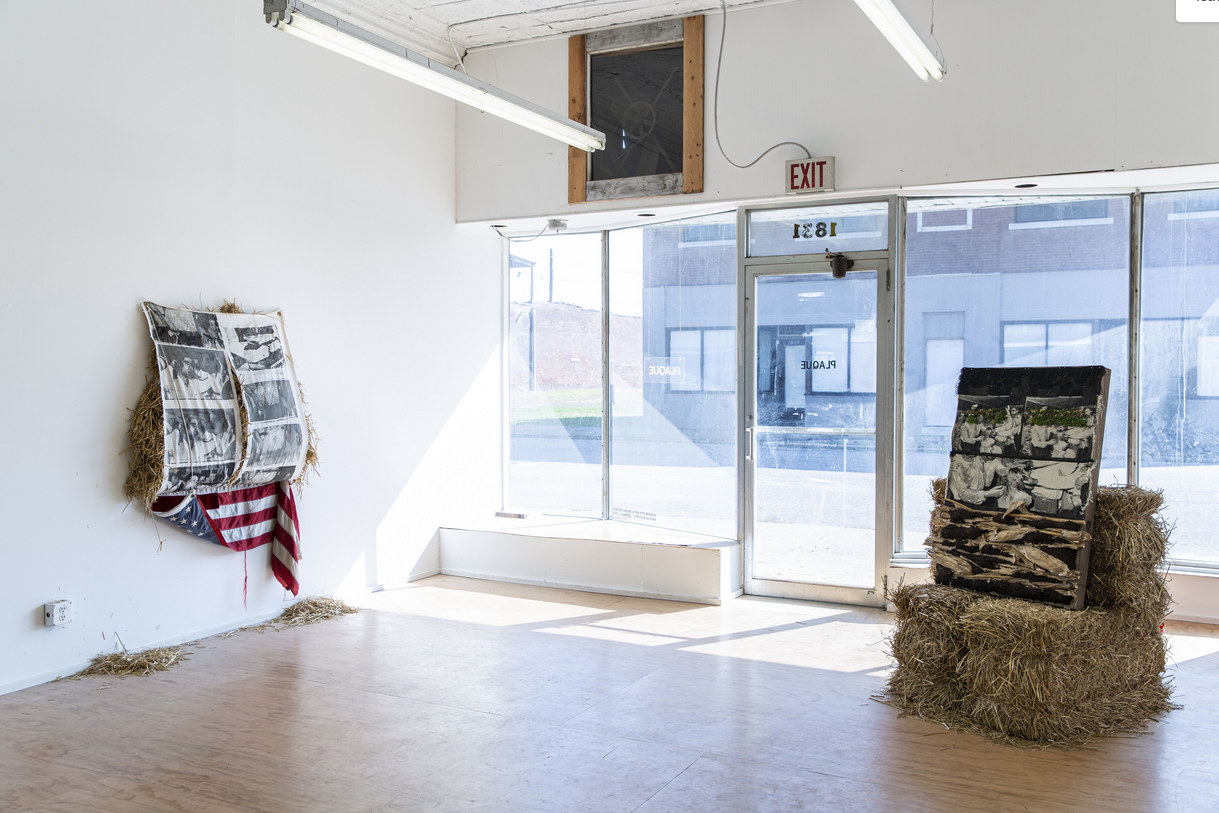 Solo Exhibition, G-CADD, St. Louis
Solo Exhibition, G-CADD, St. LouisA view of the factory, an American flag at half-staff. The landscape, an infinite expanse of field. The revival. The harvest. A death, a resurrection— a haunting, no doubt. In Heartland, we are asked to consider the landscape as embodying both felt and unknown trauma. We are prompted to take a closer look at an identity so close and familiar that we don’t stop to listen to the ghosts trapped inside.
Heartland examines the artist’s own Midwestern Evangelical upbringing. Their sculptures investigate relationships between redemption, resurrection, embodied trauma, and the failure of the American dream. Locating these sculptures within the very landscape to which they point presents a new kind of context for the work. What relationships develop when the landscape is reflected back at itself? What stories does it tell? Does the material allow for embodied trauma to speak?

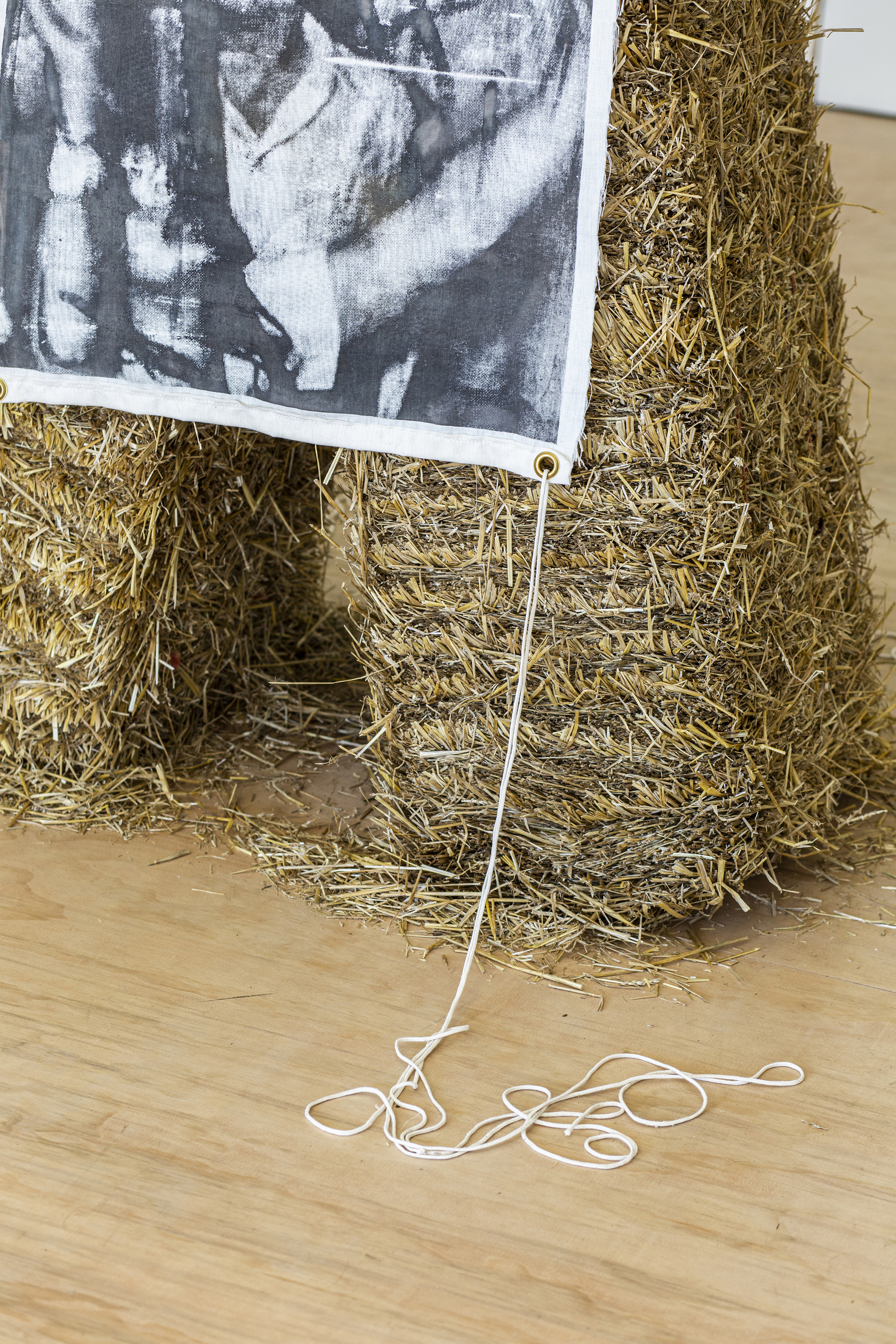
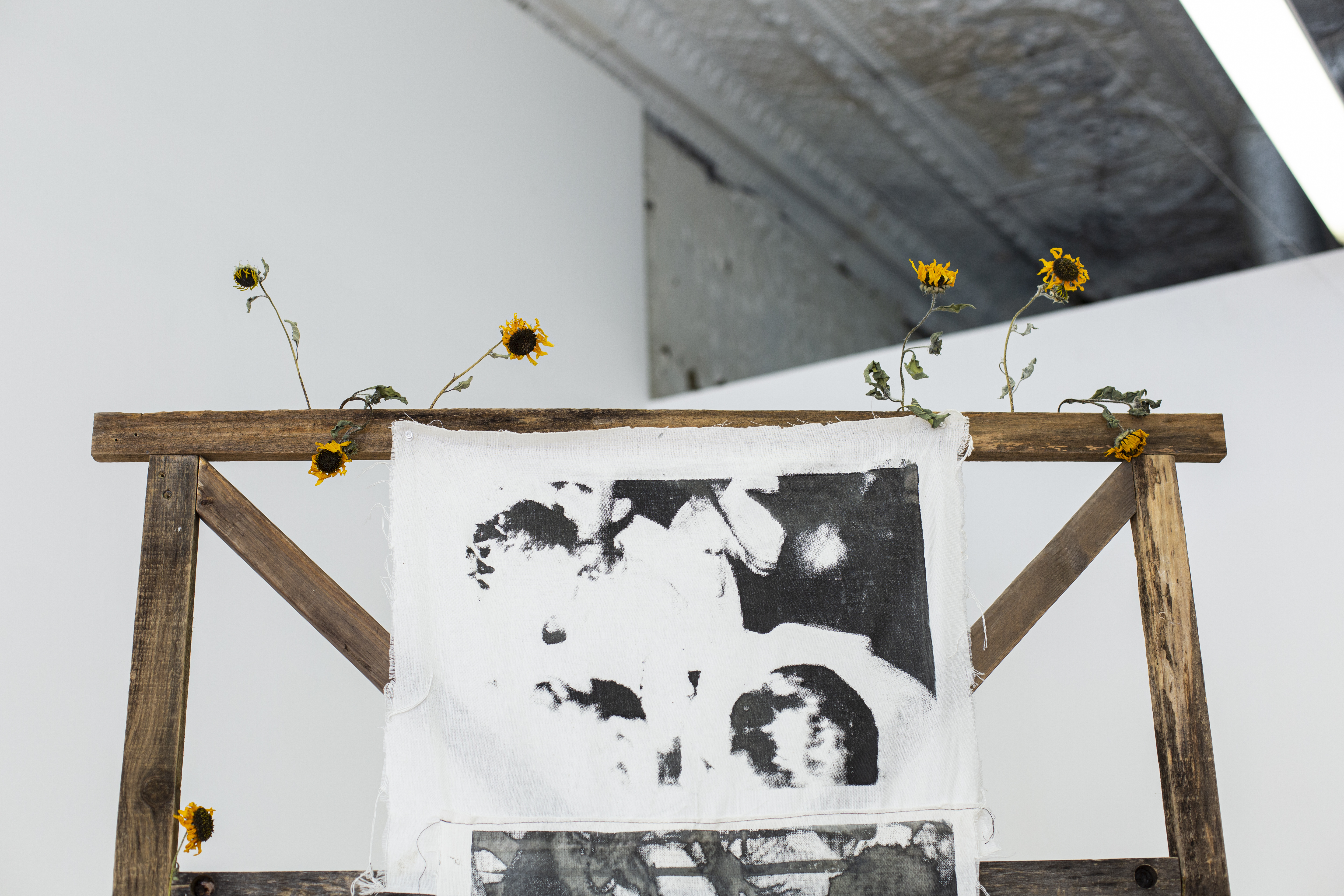



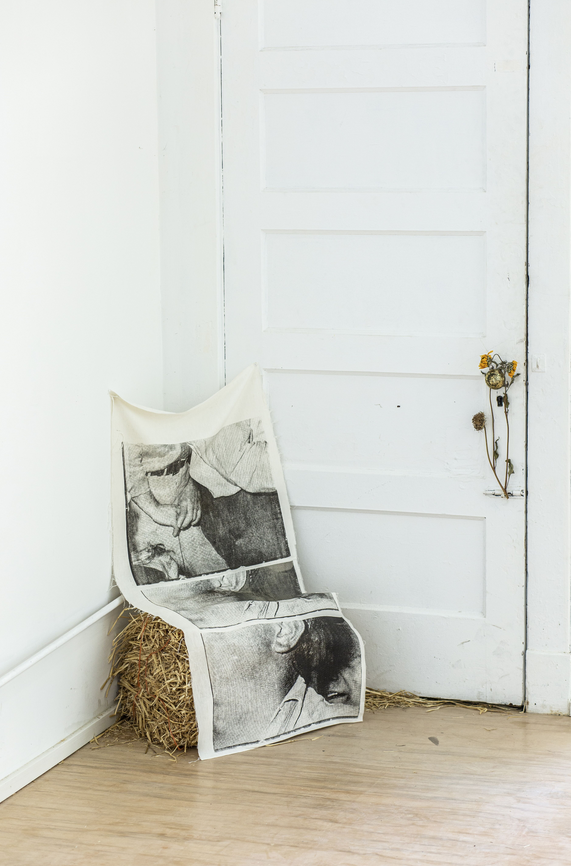
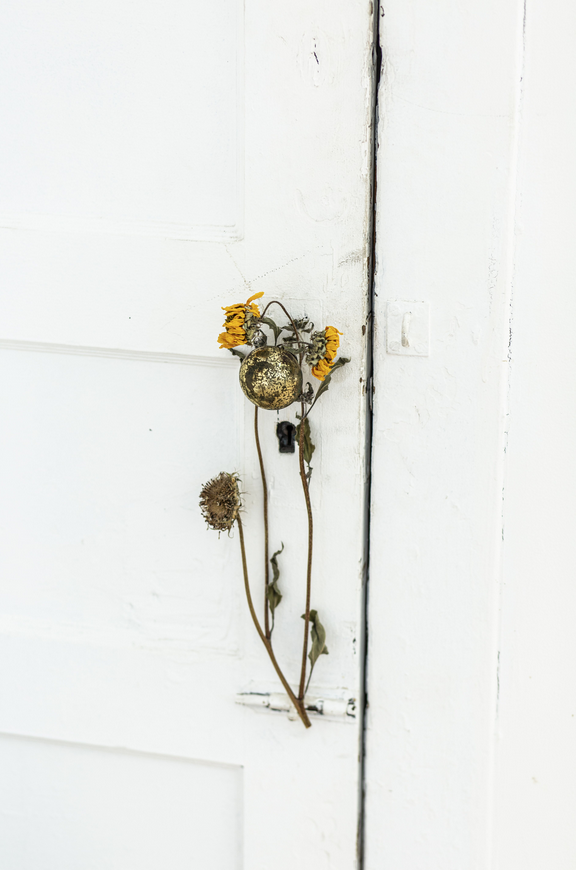



Of Roses and Jessamine, 2016.
![]() Solo Exhibition
Solo Exhibition
SITE Galleries, Chicago IL
SITE Galleries, Chicago IL
Of Roses and Jessamine investigates spatial and corporeal sites of ritual. Take from the devotional and erotic poetry of Saint Teresa de Avila, the show’s title embraces the deeply sensual nature of personal worship and spiritual ecstasy. Additionally, works in the show flicker between states of revival and
destruction. These sites for collective spiritual and social identity simultaneously surround and separate the viewer from the experience promised within. What, if anything, is being revived? Or are these structures instead collapsing from within?
destruction. These sites for collective spiritual and social identity simultaneously surround and separate the viewer from the experience promised within. What, if anything, is being revived? Or are these structures instead collapsing from within?

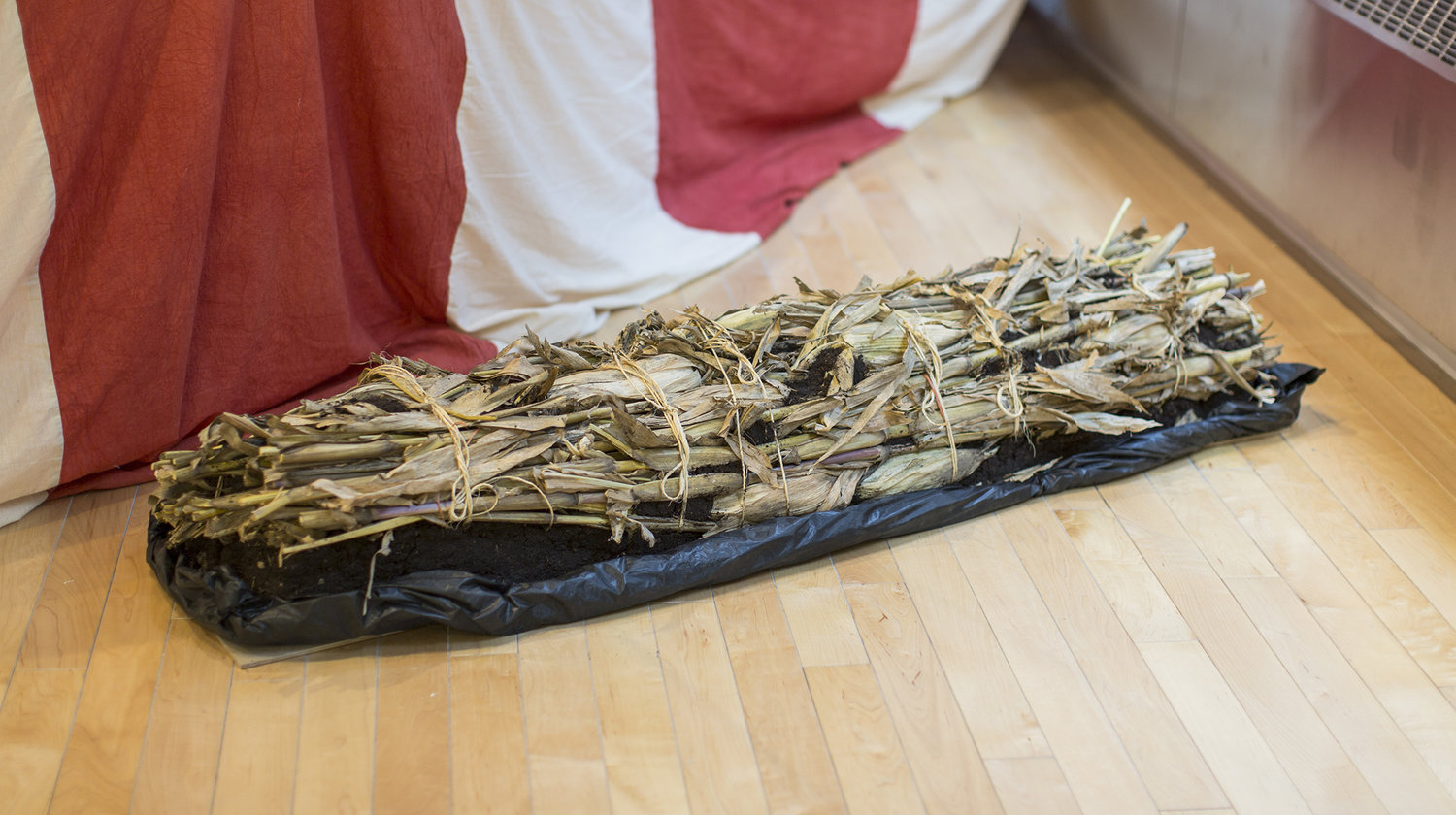


Davis' work draws deeply from their Evangelical upbringing and rural Midwestern identity. Their practice is fixated on locating the phenomenological within rural America. The work seeks to critique systems of belief while also embracing the unknown. It questions power structures, yet invokes the power of the supernatural and personal experience. Davis’ practice is tensioned between a desire for belief and existential loss. Material explorations across works explore cloth as a form of establishing shroud and sanctuary, seeking to capture the spiritual ecstasy experienced by devoted believers. It embodies an aura of obsessive devotion, as expressed in the hand-woven,hand-sewn, and queering reclamation of ritual.
